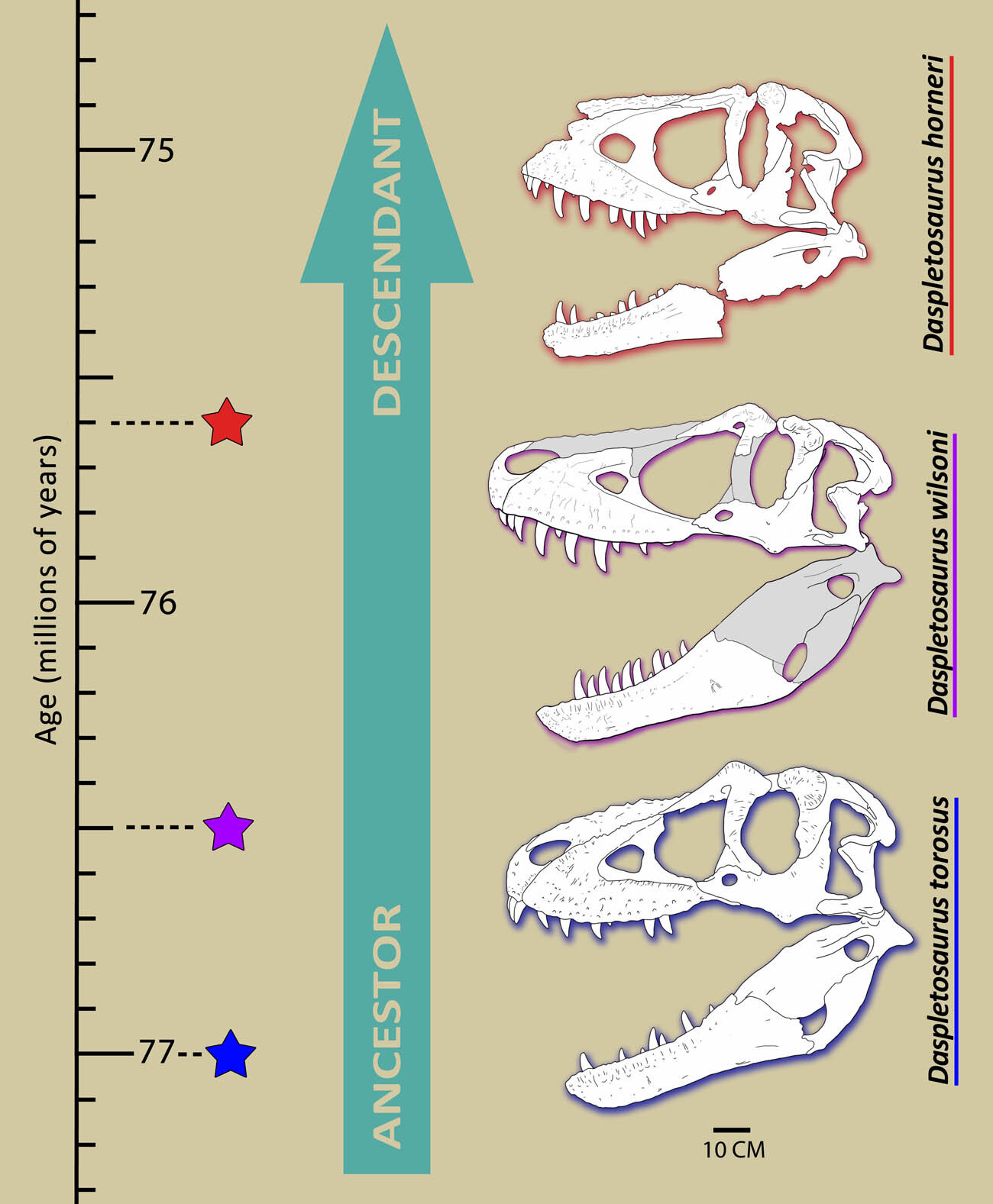
The Tyrannosaurus rex (T. rex) was one of the most ferocious dinosaurs that roamed Earth in the very late Cretaceous period — about 66 million years ago. Over the years, scientists have collected substantial information on the tiny-armed reptile itself. However, very little is known about how the vicious predator evolved. Now paleontologists at the Badlands Dinosaur Museum in North Dakota believe they may have found an essential missing link to the T. rex's lineage.
Museum crew member Jack Wilson first stumbled upon the dinosaur's nostril sticking out from a cliff in northeastern Montana in 2017. The team was easily able to unearth an upper jaw bone and several broken vertebrae. But removing the rest of the fossils proved challenging. They were buried under 26 feet (8 meters) of solid rock. It was not until 2021 that the scientists were able to extract all the preserved remains, including a partial skull.

But the effort was well worth it. The fossils were those of a new dinosaur species that roamed Earth over 76 million years ago. The creature, named Daspletosaurus wilsoni (D. wilsoni) or "Wilson's frightful reptile," had mixed features. The spiked horns around its eyes were similar to those found in more primitive Tyrannosauruses. However, the dinosaur's tall eye socket and air pockets in the skull resembled those found in later Tyrannosauruses such as the T. rex. This led the scientists to conclude that the D. wilsoni was a "halfway point" or the "missing link"' between older and younger Tyrannosaur species.
Resources: cosmosmagazine.com, Livescience.com, phys.com, popularscience.com, phys.com
